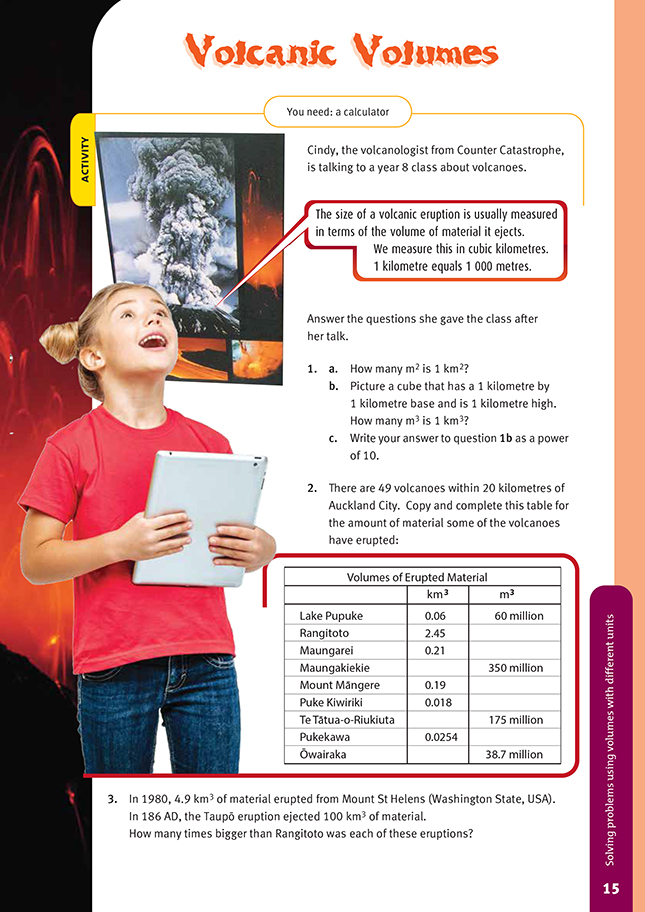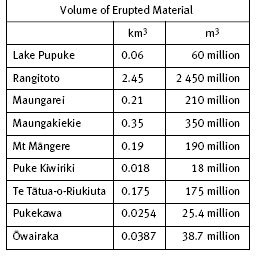This is a level 4 measurement and 5 number activity from the Figure It Out theme series.
A PDF of the student activity is included.
Click on the image to enlarge it. Click again to close. Download PDF (246 KB)
write large numbers in standard form
convert between km3 and m3
FIO, Levels 4-4+, Theme: Disasters Strike! Volcanic Volumes, page15
A calculator
Other mathematical ideas and processes
Students will also:
• visualise very large numbers
• convert from one unit to another.
Activity
For successful learning to occur, the students need to visualise and understand what a cubic metre is and how to determine how many of them make up a cubic kilometre. Having students physically handle and measure 3-dimensional objects, as well as calculate the volume of the objects in different units, is a vital step in the learning process.
On first exposure, it will be difficult for the students to visualise a cubic kilometre, but one could be simulated using a scale model. A cubic metre could be constructed quite easily using wooden blocks or a wire frame structure. 1 metre = 1 000 millimetres, so a cubic metre is the same as:
1 m x 1 m x 1 m = 1 000 mm x 1 000 mm x 1 000 mm
= 1 000 000 000 mm3
= 109 mm3.
In the same way, since 1 kilometre = 1 000 metres, 1 km3 = 109 m3.
Notice that 109 = 1 000 000 000, which is 1 000 x 1 000 000 or 1 000 million. This is a useful way of looking at the conversion of cubic kilometres to cubic metres. It means that 1 km3 = 1 000 million cubic metres.
So, 2.45 km3 = 2.45 x 1 000 million m3 or 2 450 million m3.
Cross-curricular links
Social Studies
The students could research an area in New Zealand or overseas where active or extinct volcanoes exist. They could investigate the history of the area, including the last eruption, and how that particular area has been populated over time. They then carry out a “plus, minus, interesting” exercise on the advantages and disadvantages of living in this area now. They could present their findings as a slideshow.
Achievement Objectives
Demonstrate knowledge and understandings of:
• how places reflect past interactions of people with the environment (Place and Environment, level 4)
• why and how people find out about places and environments (Place and Environment, level 4)
Science
The students could research the effect of ejected volcanic material on the landscape and the environment and its impact on land formation and erosion.
Achievement Objectives
• investigate the positive and negative effects of substances on people and on the environment (Material World, level 4)
• collect and use evidence from landforms, rocks, fossils, and library research to describe the geological history of the local area (Planet Earth and Beyond, level 4)
See also: Building Science Concepts Book 12.
Answers to Activity
1. a. 1 000 000 m2
b. 1 000 million m3 (1 000 000 000 m3 or 1 billion m2)
c. 109 m3
2.
3. Mt St Helens: 2
Taupo: 40.82 (to 2 d.p.)

